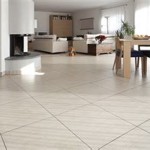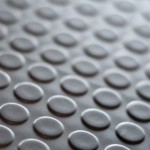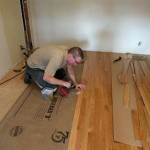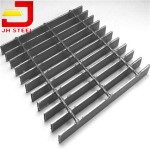Micro Concrete Flooring Cost Per Square Foot: A Comprehensive Guide
Micro concrete flooring, also known as microcement or microtopping, has gained significant popularity in recent years as a versatile and aesthetically pleasing flooring option. Its seamless appearance, durability, and ability to bond with various substrates make it a favorite choice for both residential and commercial spaces. However, understanding the cost implications associated with micro concrete flooring is crucial before embarking on a project. This article aims to provide a comprehensive overview of the factors influencing the cost per square foot of micro concrete flooring, offering a detailed breakdown of the expenses involved.
The cost of micro concrete flooring is not a fixed figure; it is subject to several variables. These variables can range from the complexity of the project to the specific expertise of the installer, influencing whether the final cost will be within the initial budgetary expectations.
Factors Influencing Micro Concrete Flooring Cost
Several key factors directly impact the cost per square foot of micro concrete flooring. Understanding these factors allows for a more accurate cost estimation and helps in making informed decisions regarding the project.
1. Substrate Preparation: The condition of the existing floor is a primary determinant of the overall cost. Micro concrete requires a stable, level, and clean substrate to adhere properly. If the existing floor is uneven, damaged, or contaminated, extensive preparation may be necessary. This could involve patching cracks, leveling the surface with self-leveling compounds, or even removing and replacing sections of the existing floor. The more extensive the preparation, the higher the overall cost will be. For example, if the existing floor is heavily damaged and requires significant repair or replacement, the cost of substrate preparation could easily double or triple, significantly impacting the overall project budget. The type of existing flooring also plays a role; concrete substrates generally require less preparation than tile or wood.
2. Material Quality and Type: Micro concrete is available in various formulations, each with differing properties, aesthetic qualities, and price points. Higher-quality micro concrete mixes typically offer improved durability, water resistance, and aesthetic appeal. These premium materials often come at a higher cost per square foot. Furthermore, the desired finish also influences material selection. For instance, a polished, high-gloss finish might require specialized additives or sealers, increasing the material cost. The choice between a single-component or multi-component system also affects the price. Multi-component systems may offer enhanced performance but can be more complex and costly to install. Therefore, careful consideration of the desired aesthetic, performance requirements, and budget constraints is crucial when selecting the appropriate micro concrete material.
3. Labor Costs: The expertise and skill of the installer significantly influence the cost of micro concrete flooring. Experienced installers with a proven track record typically charge more for their services, but their expertise can ensure a high-quality, long-lasting finish. Micro concrete application is a multi-step process that requires meticulous attention to detail. It involves mixing the material to the correct consistency, applying multiple thin layers, and properly sealing the surface. Incorrect application can lead to cracking, delamination, or other aesthetic imperfections, potentially requiring costly repairs. The complexity of the design also impacts labor costs. Intricate patterns, multiple color variations, or custom texture effects require more time and skill to execute, thus increasing labor charges. Geographical location also influences labor costs, with rates varying depending on the local market conditions and demand.
4. Project Size and Complexity: The size of the area to be covered with micro concrete flooring directly impacts the overall cost. Larger projects often benefit from economies of scale, where the cost per square foot decreases as the total area increases. However, smaller, more complex projects may have a higher cost per square foot due to increased setup time and material waste. The shape of the room and the presence of obstacles, such as pipes or built-in furniture, can also increase the complexity of the installation, leading to higher labor costs. Projects involving stairs or walls typically have a higher cost per square foot compared to simple floor applications.
5. Sealer and Topcoat Application: Protecting the micro concrete surface with a high-quality sealer is crucial for its long-term durability and resistance to staining and wear. The type of sealer used and the number of coats applied significantly impact the overall cost. Different sealers offer varying levels of protection and aesthetic finishes. Some sealers are designed for high-traffic areas, providing superior abrasion resistance, while others are formulated for wet environments, offering enhanced water resistance. The application of multiple coats of sealer is often recommended to ensure optimal protection and longevity. The cost of the sealer and the labor involved in its application can add a significant percentage to the total project cost. Furthermore, specialized topcoats, such as epoxy or polyurethane, may be applied to provide additional protection or aesthetic effects, further increasing the overall expense.
6. Geographical Location: The cost of materials and labor can vary significantly depending on the geographical location. Areas with a higher cost of living typically have higher labor rates and material costs. Transportation costs for materials can also contribute to price variations. Local regulations and permitting requirements may also add to the overall cost. It is therefore advisable to obtain quotes from multiple local contractors to get a realistic estimate for the project based on the specific location.
7. Design and Customization: The level of customization desired significantly impacts the cost of micro concrete flooring. Simple, uniform finishes are generally less expensive than more elaborate designs. Incorporating patterns, stencils, or custom colors requires additional time and skill, thus increasing labor costs. Creating textured surfaces or adding decorative aggregates also adds to the overall expense. The complexity of the design and the level of customization should be carefully considered to balance aesthetic preferences with budgetary constraints.
8. Demolition and Disposal (If Applicable): If the existing flooring needs to be demolished and removed before micro concrete can be applied, this will add to the overall cost. Demolition can be a labor-intensive process, especially if the existing flooring is difficult to remove. Disposal costs also need to be factored in, as some materials require special disposal methods. The cost of demolition and disposal can vary depending on the type of existing flooring and the local regulations regarding waste disposal.
Typical Cost Ranges for Micro Concrete Flooring
Given the multitude of factors influencing the cost, providing a precise figure for the cost per square foot of micro concrete flooring is challenging. However, a general cost range can be established to provide a preliminary understanding of the potential investment.
The typical cost per square foot for micro concrete flooring installation can range from $8 to $20 or more. This range is a broad estimate and can vary significantly based on the factors discussed previously. Simpler projects with minimal substrate preparation and a basic finish may fall on the lower end of the range, while more complex projects with extensive preparation, premium materials, and custom designs can easily exceed the upper end of the range. It is crucial to obtain detailed quotes from qualified contractors to get an accurate estimate for the specific project.
For projects requiring extensive substrate preparation, the cost could easily increase by an additional $3 to $8 per square foot. Similarly, the use of premium materials or specialized finishes can add another $2 to $5 per square foot to the overall cost. Therefore, a thorough assessment of the project requirements and careful selection of materials and finishes are essential for managing costs effectively.
Cost-Saving Strategies for Micro Concrete Flooring
While micro concrete flooring can be a significant investment, there are strategies to potentially reduce the overall cost without compromising the quality and durability of the finished product.
1. Thorough Substrate Preparation: Properly preparing the substrate is essential for a successful micro concrete installation. Address any existing damage or imperfections in the existing floor before the micro concrete is applied. This may involve patching cracks, leveling the surface, or removing loose debris. A well-prepared substrate minimizes the risk of future problems, such as cracking or delamination, which can lead to costly repairs. While substrate preparation may incur an initial cost, it can ultimately save money in the long run by ensuring the longevity and performance of the micro concrete flooring. Consider doing some of the substrate preparation work yourself, if you have the skills and experience, to reduce labor costs.
2. Opt for Simpler Designs: Complex designs and custom finishes can significantly increase the cost of micro concrete flooring. Choosing a simpler, more uniform finish can help to reduce labor costs and minimize material waste. Consider opting for a single color or a simple texture effect rather than intricate patterns or multiple color variations. A simpler design can still achieve a visually appealing and durable floor while staying within a more reasonable budget.
3. Obtain Multiple Quotes: It is always advisable to obtain quotes from multiple contractors before making a final decision. Compare the quotes carefully, paying attention to the details of the services included, the materials specified, and the estimated timeline for completion. Be wary of quotes that seem significantly lower than the others, as this may indicate a lack of experience or the use of substandard materials. A thorough comparison of multiple quotes can help to ensure that you are getting a fair price for the project.
4. Choose Cost-Effective Sealers: While it is important to use a high-quality sealer to protect the micro concrete surface, there are cost-effective options available that provide adequate protection without breaking the bank. Consult with the contractor to determine the most appropriate sealer for the specific application and budget. Consider opting for a water-based sealer rather than a solvent-based sealer, as water-based sealers are generally more environmentally friendly and less expensive.
5. Phased Installation: If the project involves a large area, consider breaking it down into smaller phases. This allows for better budget management and can potentially reduce the overall cost per square foot. By completing the project in phases, you can spread out the expenses over a longer period and avoid having to make a large upfront investment. This can also allow you to assess the quality of the work and make any necessary adjustments before proceeding with the remaining phases.

Micro Concrete Flooring At 210 Sq Ft In Mumbai Id 2852924438788

Micro Topping Concrete Flooring At 150 Square Feet In Mumbai Id 20284805712

Micro Concrete Flooring At 250 Square Feet In New Delhi Id 20249456012

How To Cover Wall Tile Without Removing Them In Bathrooms Showers Kitchens

Micro Concrete Flooring At 210 Sq Ft In Mumbai Id 2852924438788

Micro Cement Flooring Thickness 3 Mm At 300 Sq Ft In Kochi Id 21693565288

How Much Does Microcement Flooring Cost Habitat

Micro Cement Flooring Thickness 3 Mm At 300 Sq Ft In Kochi Id 21693565288

How Much Does Microcement Flooring Cost Habitat

Concrete Floor Tiles 2025 Cost Guide Modernize
Related Posts








